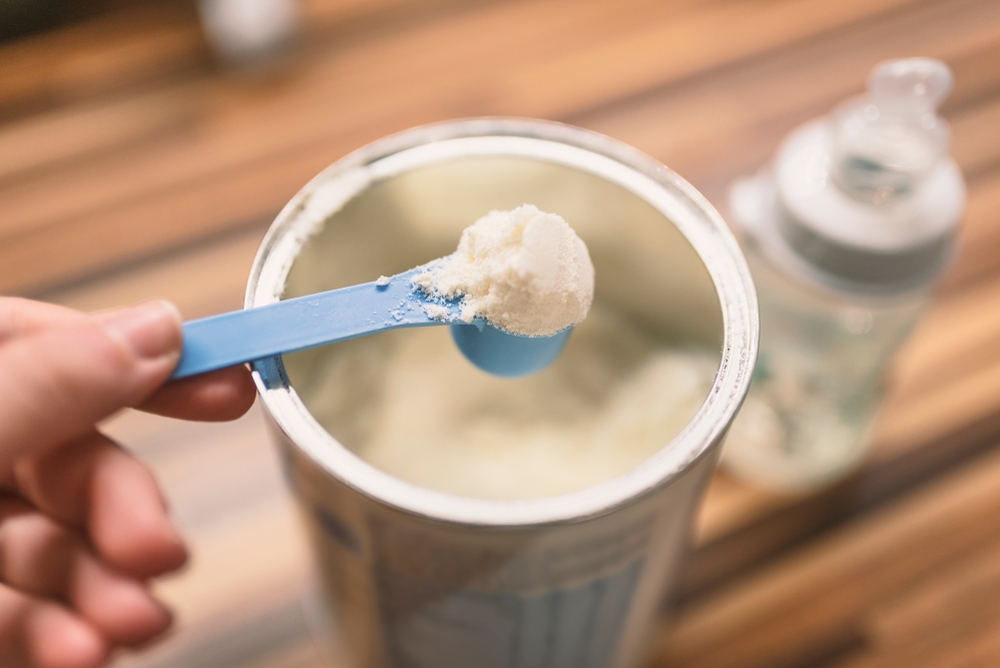
Children’s [milk powder money] is one of the major consumption expenses of many families with children.
However, good milk powder is easily available, and it is not easy to preserve a can of unsealed milk powder.
It is often said that if the milk powder has not been eaten for 28 days, it should be thrown away immediately, and the child’s delicate body cannot tolerate any risks.
However, some parents will think that this is a marketing gimmick made by merchants. What they need to do is to cover their ears and wallets quickly.
So, 28 days, is it a can of milk powder [the critical line of life]?
Don’t give the milk powder that has been opened for more than 4 weeks to children.
After the milk powder is opened, it is directly exposed to the air, which is not only easy to absorb water, but also in direct contact with oxygen, thus causing faster loss of nutrition in milk powder.
In addition, milk powder directly exposed to the air is also easy to be contaminated by microorganisms, resulting in deterioration of milk powder and even food poisoning.
Therefore, it is recommended to eat the milk powder within 4 weeks after opening the lid.

Milk powder without opening the lid will also deteriorate.
If milk powder is not stored in the shade, the loss of nutrition will accelerate even if the lid is not opened.
Some experiments show that the loss rates of vitamin B12, vitamin A, DHA, vitamin B2, vitamin B1 and vitamin B6 are 44%, 25%, 27%, 20%, 17% ~ 13% respectively when the infant formula milk powder without open lid is stored in room temperature for 2 years. [1]
Another experiment shows that the lutein content in the sealed nitrogen-filled milk powder can decreased by 44.55% when exposed to light for 10 days at normal temperature. [2]

These actions will accelerate the deterioration of milk powder.
Many daily behaviors will increase the chance of milk powder contacting water, oxygen, light and microorganisms, thus accelerating the nutritional loss and deterioration of milk powder, such as:
• The number of times the milk is washed is high, Repeatedly open and close the lid many times, this is mainly the case of pure formula milk powder feeding. After taking the milk powder, the lid is not tightened. Put the lid beside the kitchen stove, pool or sunny window sill. Put the milk powder in the refrigerator for refrigeration. Before taking the milk powder, do not wash hands or do not dry hands after washing hands. The milk powder spoon is randomly placed. The amount of single can of milk powder is too large.
In doing so, you can save a lot of [milk powder money]
We can start from every link of buying milk powder, brewing milk powder and storing milk powder to alleviate the nutritional loss and deterioration of milk powder.
1. Buy canned milk powder. Compared with unsealed bagged milk powder stored with clips, canned milk powder tightened with lids can better help unsealed milk powder isolate air.
2. Choose small cans. Take 4 ~ 8 weeks of babies as an example, breast-feeding only once a day to feed milk powder as the premise. This month-old baby’s milk volume is about 120 ~ 140 milliliters, and the amount of milk powder is about 20 grams. That 4 weeks also means that only 560 grams of milk powder are needed. If you buy 900 grams of milk powder in a can, you can choose 500 grams of small cans.
Even if the baby fed with complete formula milk powder or the older baby drinks more formula milk powder every day, he can also choose small cans to maximize the nutrition in the milk powder.
3. Wash and dry your hands when washing milk powder to prevent water dripping into the milk powder or microorganisms on your hands from mixing into the milk powder.
4. Cover and tighten the lid immediately after taking out the milk powder each time.
5. Store the milk powder can in a cool, dry and ventilated place. If conditions permit, you can purchase a special sealed container to store the milk powder can.
Once again, parents are reminded that in case there is still a lot of milk powder for more than 28 days, they should not give it to their children and can use it to make steamed bread with flour.
